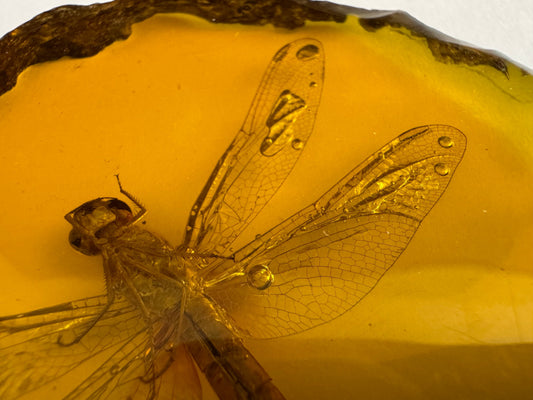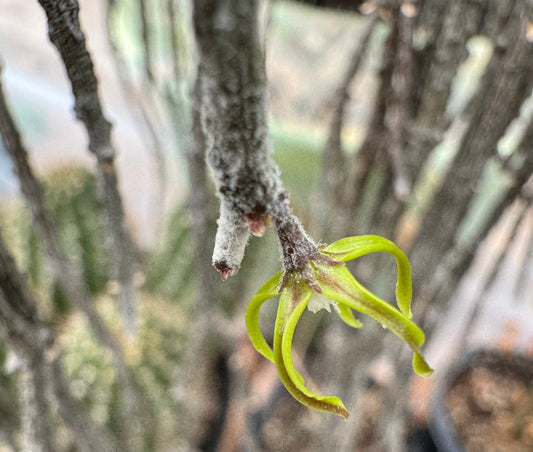Sources and outside learning
When you've been in a hobby a while you inevitably lose track of where you learned what. Credit for the information on this site must be given to a vast tapestry of resources I've learned from over the years. Those listed below are the ones I recall as the most valuable, and still often use as a reference.
Collapsible content
Minerals
Mindat.org by the Hudson Institute of Mineralogy
Mindat is an essential resource for serious collectors (and just fun to look at!). I find it useful to confirm locales for minerals and learn trade terms used to describe growth forms and crystal habits.
If you're new to collecting, browsing can be a good way to learn the names of minerals, and also learn what quality specimens look like. Phonies are a lot more obvious once you have a better eye for things!
Mindat can be useful to identify minerals. I often know the primary mineral in a specimen but then end up with questions about what else is going on there. In that case visit the mineral page and scroll down to "Common Associates" to look for likely matches. If that doesn't work but you know the mine the specimen came from, search that mine to see a list of other minerals found there. Similarly, when you search a mineral you can narrow images down by region or country and look for something that looks familiar.
The Quartz Page by A.C. Akhavan
I'll admit I used to think quartz was for basic bitches. When you see the same material over and over and over... it quits seeming novel. When I started collecting and studying some less common types of quartz I came to appreciate quartz is far more intriguing than I had given it credit for. Amethyst is still for basic bitches, but even the most common types of quartz can display a range of growth forms that tell a story about how that crystal formed.
The Quartz Page was a vital resource in this process! They have catalogued different growth types, crystal habits, and varieties of quartz (agate, jasper, citrine, smoky), with information about how the particular form came to be—if known. This is all documented with photographs and diagrams for easy visual identification.
Gems-inclusion.com by Egor Gavrilenko
Gems-inclusions.com is another cool resource with in-depth information about inclusions in gems and minerals. The world of inclusions is incredibly complex and varied, so this is a huge undertaking.
The site includes definitions, explanations of how inclusions occur, example images, and galleries documenting unusual inclusions. The information available can help you understand what you are looking at in the specimens you own—and discover intriguing formations you may wish to collect in the future. The website also has a store specializing in included gemstones.
Practical Geology by The Great Courses
The Great Courses are renowned for their quality. I've linked to this course on Practical Geology on their website in case you are a subscriber. Otherwise check with your local library: many libraries include The Great Courses as part of your membership. I was able to watch the series through Kanopy for free (shout out to libraries!).
Each episode teaches you how to look at our world and understand the forces behind the forms you see on the landscape. This course is pretty entertaining and useful to understand the context for how your minerals formed. There are even episodes specifically on minerals, gems, and fossils. If that doesn't already sound thrilling, there is a lot of practical information about how and where to hunt for your own specimens.
iRocks.com and Arkenstone Fine Minerals
Arkenstone and iRocks were founded by expert collector, dealer, and professional mineral photographer Rob Lavinsky. If you can afford their specimens what the hell are you wasting your time here for, they have some truly exquisite fine minerals. Even if you can't afford their stuff, it's good practice to look (and aspire to it). It's a good way to learn about unusual minerals, and understand what good form and quality look like.
Arkenstone has educational materials available, including through their social media (@arkenstone_minerals on instagram). I especially recommend following for their "Fake Alerts" where they show off new phonies hitting the market and explain what they are(n't)—vital for the less seasoned collector.
Plants
The Encyclopedia of Succulents by LLIFLE
It is increasingly hard to find good information in internet searches versus an avalanche of shopping results. I have found LLIFLE to be an invaluable resource to accurately identify my plants. The site doesn't have every species documented, but the information available is far more extensive and species-specific than other resources I have come across. It includes extensive descriptions of plants, their growth habits, origins, care requirements, propagation, and reference images.
One of the more useful features lists other scientific names that have been applied to the species—as any cactus and succulent collector knows, taxonomies seem to be updated regularly as we learn more about these species. This can create a lot of confusion when some people are still using older inaccurate names.
Southeastern Arizona Wildflowers and Plants by T. Beth Kinsey
This website is an identification guide for Sonoran plants with a focus on the Tucson region. It is an incredibly thorough source with descriptions, reference images, native status, and notes like whether they are favorites with pollinators. Plant are indexed according to flower color or distinct characteristics like cones.
I use this site to separate friend from foe when weeding my yard, and to learn about native plants.
Prickly Prospects Cactus Nursery
I am lucky to collect plants that aren't really at risk of poaching and habitat loss in the wild. Unfortunately as houseplants have grown popular as a hobby some species are being stripped from their native environments, to be sold in box stores and on platforms like Etsy (...to consumers who will casually kill them within three months).
Prickly Prospects' grows cacti at risk of extinction from poaching and habitat encroachment to ensure they at least continue to exist in cultivation. This is known as ex-situ conservation, which can ultimately be used to reintroduce species extinct in nature. They make an effort to accurately identify their plants, which really matters to people serious in the hobby (me)!
Prickly Prospects has a broader collection of unusual cacti and succulents beyond this, which is where I have sourced a lot of my stapeliads from. They are adding more varieties to their store and Etsy regularly. Follow them on Instagram to learn more.
IUCN Red List of Threatened Species
I have used the IUCN Red List and regional variants like the Red List of South African Plants to check the species I have in my collection. I try to remain conscious of the ethics of this side of collecting plants, and if I am unfamiliar with a plant I look it up before I buy it (or get it from my Source, see above). Plants can be prolific in cultivation but threatened in the wild, such as due to habitat loss from human development.
To me the larger concern is buying poached plants, or plants that have been grossly commercialized to a point that is driving poaching. As a general rule, the longer it takes to grow, the higher the risk that poaching will spring up as the "easy" way to offer you cheap specimens instead of waiting years for them to mature in cultivation.
B&B Cactus Farm
B&B Cactus Farm is a great local nursery if you are lucky enough to live in the Tucson area. The nursery is half botanical garden with a shaded cactus garden and mature specimens of cacti and succulents on display throughout their greenhouses. I like to take visitors there to introduce them to the diverse world of cacti and succulents.
B&B's tropical house contains several huge adeniums that are impressive when in bloom. One of the stars of their collection is the torch cactus house, featuring dozens of variants—many of which were developed by local expert botanist Dr. Mark Dimmitt. It is incredible to visit during peak blooms in the spring when the hoop house fills with different colors of flowers.
I've included this nursery here because the owners and staff have a wealth of information! If you have the chance to visit they can answer questions, provide guidance on care like which soils and fertilizers they use, and help you find species best suited to the conditions of your yard.
Isopods
Isopod Zoology: Biology, Husbandry, Species, and Cultivars by Orin McMonigle
Isopods have only been part of the exotic pet trade for about a decade now, which means there is still a lot to learn about them. McMonigle was among the first pioneering the field of isopod breeding and documenting it in detail, and is responsible for importing many of the exotic varieties available in the trade today.
This text is a vital reference for the serious isopod collector, with sections on isopod biology, best use as cleaners and feeders, and detailed profiles on different isopod species.
Isopod Anatomy and Biology by Nicky Bay
This is an excellent beginner's guide to isopod anatomy and technical terms, illustrated with microphotography. Don't know how to sex your isopods? Unsure what to call that part? This article is where you want to start!
The website isopod.site has other articles relating to isopod care, and has a taxonomical index of known varieties of isopods. If nothing else, stop by to appreciate some of the beautiful photography.
The Smug Blog by Smug Bug
Smug Bug has a wealth of information about keeping isopods, well-earned from years of keeping hundreds of isopod cultures—and developing new varieties! They have advice to help you pick which isopod varieties are best for your needs, guidance to set up your enclosure, and answers to common questions about soil mites and how to change out the isopods' substrate.
Smug Bug's store has dozens of varieties of isopods available, and is where I sourced many of my colonies initially. Honestly unless I'm geographically closer, go buy from them.
They provide clear pictures of variants, and show colors well (as in, accurately; some vendors use images far more vibrant than the real deal). As noted in the Smug Blog, it can be important to use vendors who do their own photography! Beyond the fact that stealing images is skeezy, all isopods are not created equally. Not ANY picture of the variety will work as a reference—you need to specifically see what this vendor's culture looks like.
r/isopods
As you may have gathered, hardcore hobbyists are really leading the the field with practical knowledge about isopods. When I was learning the hobby I quickly noticed that if I had a question not covered by one of the above sources, nine times out of ten my google searches led me to discussions on r/isopods. Skip google, it's getting worse. You can directly search the forum for answers to common questions like how to get rid of soil gnats.
Miscellany
Coming soon...



